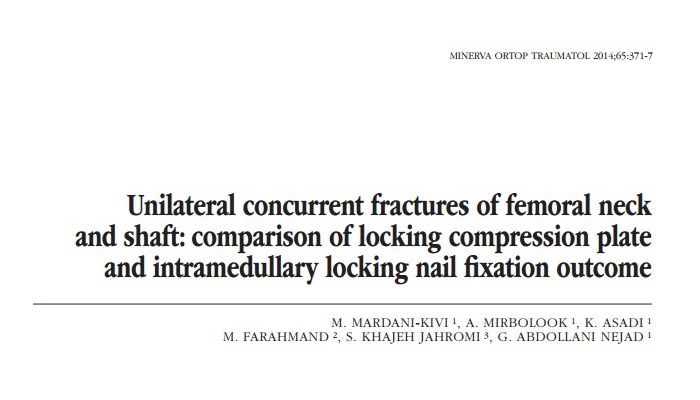- تاریخ درج : ۲۹ فروردین ۱۳۹۶
- تعداد بازدید: 3102
- نویسنده : dr. Mohsen Mardani-Kivi
-

AIM: Unilateral concurrent fractures of the femoral neck and shaft usually occur as a result of high-energy trauma. Early diagnosis of injuries, surgery and stabilization of fractures are important factors to reduce complications and improve clinical outcomes. There is no “gold standard” treatment for this type of fracture. The aim of this study was to compare the locking compression plate (LCP)-screw and the reconstruction intramedullary nail (IMN) methods.
METHODS: This analytical cross-sectional study that was conducted during 2007-2012. Patients were divided into two groups: one group was treated with LCP-screw and the second group was treated with IMN. All patients received a “followed-up” evaluation, at which time clinical outcome and any complications were evaluated. All data were analyzed by SPSS with ANOVA, Student Test and Fisher exact test. P<0.05 was considered as significant difference.
RESULTS: Thirty-four patients with mean age of 30.73±6.85 completed this study. Among variables in the study, significant difference were found in operation time (P=0.0001), neck union time (P=0.031) and shaft union time (P=0.047) between the two groups and were longer in the LCP-screw group.
CONCLUSION: Despite the reduced time of surgery and a shorter time required for bone union in the IMN group, if rapid diagnosis and stabilization of unilateral concurrent fractures of the femoral neck and shaft is performed then the use of the locking compression plate (LCP-screw) or the reconstruction intramedullary nail (IMN) presented no significant difference in clinical outcome or incidences of complications among the two studied groups.
-